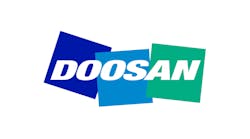“Innovation Sourcing: Contributing to Company Competitiveness,” a study published by CAPS Research, the research arm of the Institute of Supply Management, underscores the importance for organizations to adopt “external innovation” rather than rely solely on their internal research and development efforts. In some cases, goals are being set to increase revenues by adopting external innovation. For example, Proctor & Gamble has a goal to attain 50% of its revenues through external innovations over the next five years.
The CAPS findings are supported by the seventh annual global survey of senior executives conducted by The Boston Consulting Group together with Bloomberg/Business Week. Two findings of that survey stand out:
• “Innovation is again becoming a top priority at companies, after the Great Recession, and more resources are being spent on innovation. Satisfaction with innovation return is slowly increasing,”
• “Three areas of weakness limiting innovation are: (1) risk adverse corporate cultures, (2) lengthy new product development cycle-times, and (3) inadequate measurement practices for innovation.”
Another objective driving the acceptance of external innovation is the desire to protect intellectual property. It makes no sense to duplicate something that already has been invented, tested, patented and licensed. The work has been done, the idea validated, and intellectual property protections established. To infringe on a patent is to risk legal action that will have a negative bottom-line impact, as well as tarnish an organization’s reputation.
An example of a patent-protected new technology is the automated vendor selection (AVS) competitive procurement procedure that makes it possible for buyers of custom goods and services, such as printing and the manufacturing of specialty products, to streamline procurement, gain full transparency, document every task, and reduce costs for procured goods or services by 25-50%. The average savings for current licensees is running around 42%.
AVS Technology™ was invented in the 1990s, patented with a series of patents in 2002, 2008, and 2010, and licensed to organizations across many industrial sectors, including heavy equipment, construction, building materials, parcel delivery, utility, computer hardware, retail, grocery, health care, finance, resale distributor and associations.
The technology itself is only part of the package, because to achieve the transparency, strengthened quality controls, and 25-50% in cost reductions, the inventor e-LYNXX Corp. also invested in the development of a proprietary communications and workflow system, and a series of tested best practices. For the company, the successful outcome represented a tremendous investment in time and a huge allocation of resources.
External innovation recognizes the importance and benefits of inventions that are developed outside of internal R&D departments. To advocates of external innovation, it is common sense to adopt a proven technology rather than to “reinvent the wheel” to achieve similar results, especially when an inventor is making deployment of the invention very attractive.
Using e-LYNXX as an example again, there are no upfront costs to the client for having the AVS software installed and staff trained on the system. The buyer organization also eliminates unnecessary R&D expenses, another bottom-line benefit.
CAPS Research encourages organizations that want to be competitive to adopt external innovation as a business strategy. Senior level executives need to encourage innovation from all sources, and they need to support and engage suppliers that are most likely to provide innovative solutions. “The companywide innovation strategy should be more ‘open’ than ‘closed,’ with an organizational culture that values and emphasizes innovation from supplier and other external sources” the study concludes.
William Gindlesperger is the founder, chairman, and CEO of e-LYNXX Corp., which holds the patent for the automated vendor selection procedure, a technology that is integral to e-commerce and optimizes cost reduction in the procurement of all custom and specification-defined goods and services.
